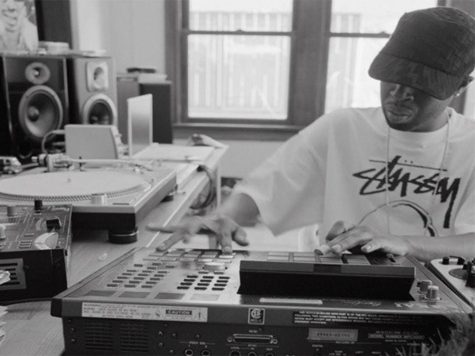Ryan Adams, Taylor Swift, and the Rockist v. Poptomist farce
September 29, 2015

Courtesy of ET
Last week, Ryan Adams released 1989, in which he covers Taylor Swift’s 1989 in it’s entirety as a kind of tribute. Reaction to Adams’ 1989 has been largely mixed; some publications think it’s a triumph, others, a somewhat sexist attempt to “mansplain” Taylor Swift to a close-minded audience. Either reaction is indicative of larger critical trends: one that seems on the decline, the other on the rise.
The first is “rockism,” a term with a largely negative connotation that’s meant to describe people who view rock as the most “authentic” form of music. Any deviation from the norms of rock music (self-written songs, deviations from traditional rock instrumentation, reliance on electronics) is seen as a drift away from what makes music great in the first place and doesn’t demand as careful consideration or acclaim. The second is “poptimism,” a sort of reaction to rockism that argues there is nothing inherently inauthentic or artless about pop music and that the true crime of music critics isn’t enjoying such music, but being ashamed for doing so. These two schools of thought aren’t mutually exclusive (and it’s not like they’re codified ideologies, there is no “Poptimist ManifestoÛ), but they’re helpful ways to delineate conflicts that arise in the music critic world.
So it seems pretty obvious where both sides would stand on the great Adams/Swift debacle of 2015. Rockists are drawn to the moody guitar balladeer, poptomists to the candy-coated kaleidoscope of Taylor’s world dominating pop. But what Adams’ experiment is really saying, I think, is that the war is bunk.
Before Adams’ 1989, both he and Swift released original albums in 2014. For Swift, it was the original 1989, her first explicitly “pop” record (I’m not sure there’s a universe where Red should be considered a country record, but who am I to argue with the Big Machine marketing department) and, as its title would suggest, an embrace of the synthpop and dance-pop pleasures of yesteryear. Ryan Adams’s release that year was the eponymous Ryan Adams, which like Swift’s 1989 looked to the Reagan-era for inspiration. It’s a rock album, sure, but its lacquered production and straightforward song structures harken back to a simpler time when rock was, well, pop. This was hardly new territory for Adams, who had released at least one album prior to this, 2010’s III/IV that took a similarly populist approach to rock music.
The point I’m trying to make by evoking these two albums that evoke the past, is that Adams and Swift have similar goals. While still sounding distinctly modern, they’ve both looked to the past to create the music they want to make. Music from a world where Bruce Springsteen, a man who’s come to personify the very idea of “rock n’ roll authenticity,” isn’t afraid to release a synth heavy song like “Dancing in the Dark,” watch it shoot to number two on the Billboard Hot 200 and not be called a sell out. The genius of Adams’s 1989 isn’t that he’s able to take commercial pop and turn it into some form of indie cred, but that he’s able to demonstrate he isn’t afraid of being associated with pop music, and that we shouldn’t be, either. For some people, this experiment will be a revelatory experience that exposes depths of Swift’s music that may be masked to them by her affinity for glittery pop production, but I prefer to view it as an exploration into how different people deal with pain.
Taylor Swift is pretty infamous for writing songs about relationships gone bad, but, to her credit, these songs have always provided an element of closure, or at least a solution. “You Belong with Me” works as a proof as to why her prince charming belongs with her, “Bad Blood” is a call to arms against fakery and “We Will Never, Ever Get Back Together,” well, the title’s self-explanatory. Swift may fall for fools, but she doesn’t suffer them, and her songs about act as an epilogue to their relationship. As she makes clear in “22,” exes are meant to be mocked, and such mockery might as well take the form of celebration.
The outlook of Adams, however, is best summed up in the first song on his 2000 debut full-length Heartbreaker: To be young, is to be sad, is to be high. To Adams, broken relationships are point A on a path of further destructive behavior. Adams expects, and sometimes welcomes, to be used and forgotten by his lovers, rarely addressing them from a position of strength. He may challenge, as on “My Winding Wheel,” someone to find someone better them him, but that challenge sometimes becomes an invitation as on “Come Pick Me Up,” and this typically leaves Adams drunk, high and lonesome, asking “Why Do They Leave?” Taylor, of course, rarely asks these questions, because she’s usually the one who leaves.
These two separate methods of coping are probably best exemplified in “Shake It Off,” the lead single from the Swift’s original 1989. As originally released, “Shake It Off” acts as a rebuke to Swift’s critics. The spoken word/rap section is probably my least favorite part of the song and makes me cringe every time I hear it, but it’s also the most important. Other people may get down about liars and dirty cheaters, but Swift bulldozes over them in search of the next sick beat. That section is omitted from Adams’ cover, and its absence is telling. Adams may claim to shake it off, but he sounds like he barely believes himself. He also uses the full phrase “Shake It Off” much less than Swift, but he does promise to “shake.” I’m not sure exactly what is making him shake, but it doesn’t sound entirely voluntary or joyous.
While either version of “Shake It Off” have different outcomes, they’re both inspired by critics. Swift works to invalidate their criticism, whereas Adams tries to numb it. In this sense, either versions of 1989 takes in the same outside world, but outputs very different reactions. For some, the “dance like nobody’s watching” reaction is more appealing, for others, the “fade into darkness” one inevitable. But I think the point Adams (and through her enthusiastic reception of the project, Swift) is trying to make is that rock or pop, the inspiration for music comes from similar experiences. It’s peoples differing reactions to and management of those experiences that results in divergent art forms, and any suggestion that one reaction more authentic or invalid is, well, invalid.














